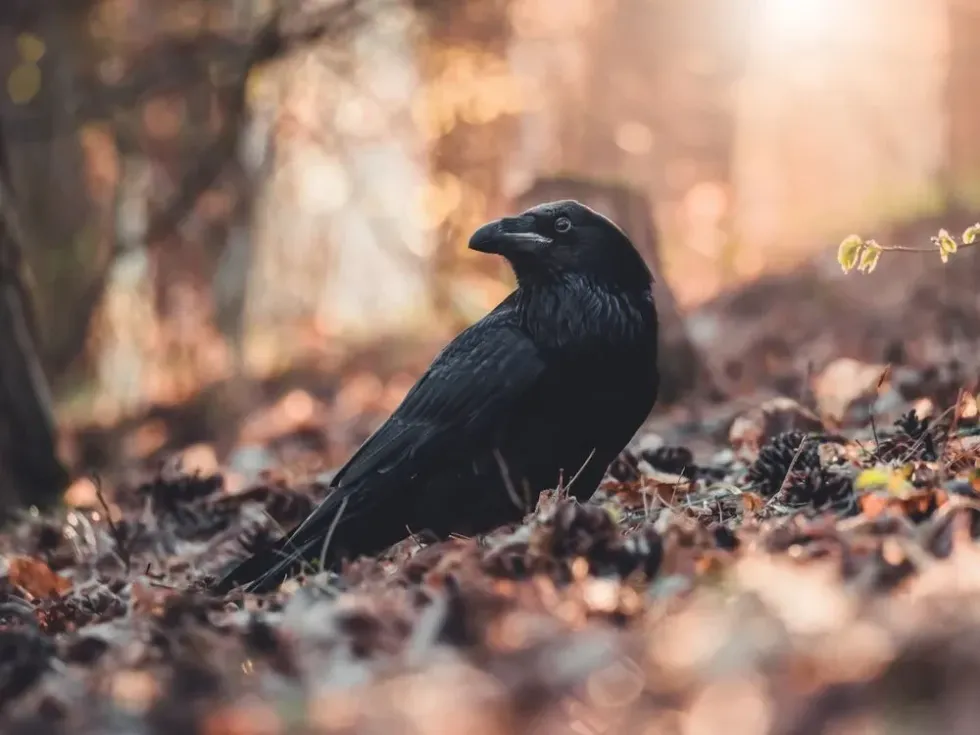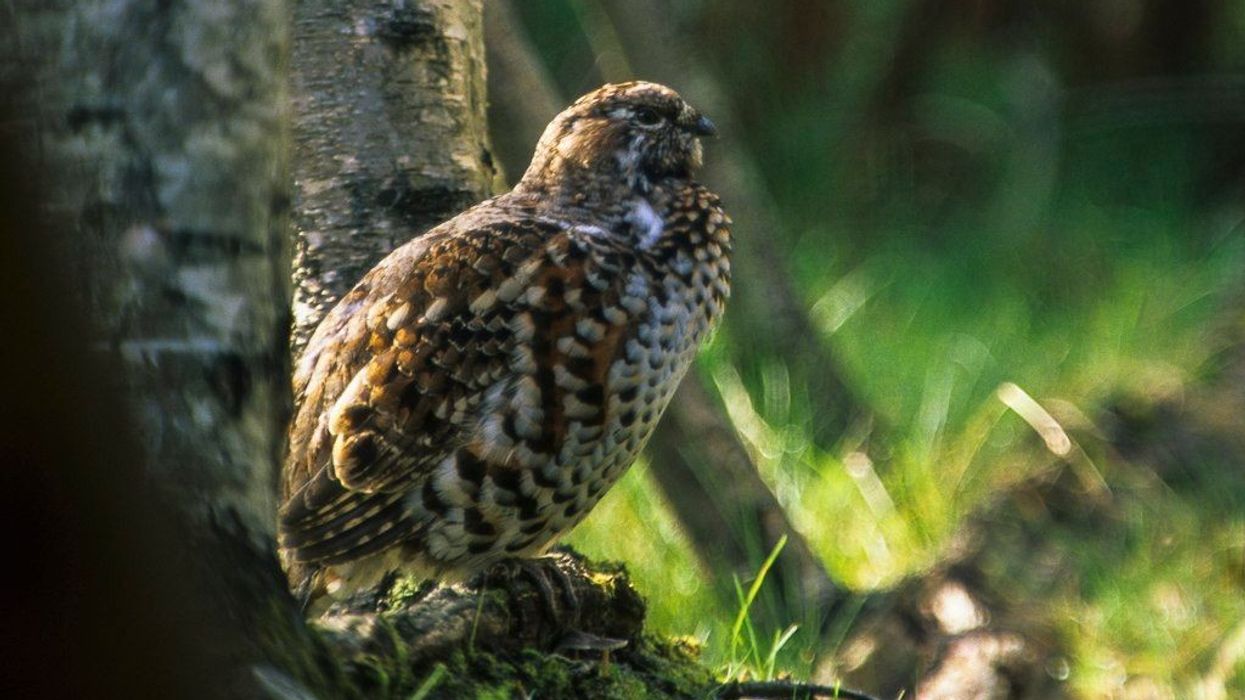The forest raven (Corvus tasmanicus) is a black-colored bird native to Tasmania. Ravens are found on every continent of the world, but the dark forest raven is the largest and heaviest of them all.
While the breeding time differs between the Corvus tasmanica and Corvus coronoides (Australian raven), nests are either freshly built or reused to raise their offspring in October. Both the forest raven (Corvus tasmanicus) parents are equally involved in raising and nourishing the nestlings in their nests. Nests are built atop tall trees in forests.
These forest ravens usually stick to nesting in a single tree and are protective of their territory. However, they allow many other members of the corvid family to settle nearby.
Want more information about this black bird of the world? Read on to find out more about the forest raven (Corvus tasmanicus).
Check out the informative description of the blackpoll warbler facts and red-backed shrike facts here.
Forest Raven Interesting Facts
What type of animal is a forest raven?
The forest raven (Corvus tasmanicus) is a species of corvid bird from Tasmania. It differs from the Australian raven (Corvus coronoides), but both belong to the order Passeriformes.
What class of animal does a forest raven belong to?
The forest raven (Corvus tasmanicus) belongs to the class of Aves and the Corvidae family.
How many forest ravens are there in the world?
The exact population of the forest raven (Corvus tasmanicus) is not known. There are plenty of Corvus bird species throughout the world, but research proves forest ravens can only be found in Australia.
Where does a forest raven live?
The forest raven (Corvus tasmanicus) is also known as the Tasmanian raven based on its origin. They are found in Tasmania, New South Wales, southeastern Australia, and in isolated patches in Victoria's Gippsland, Otway ranges, and the plains of Grampian and Millicent.
What is a forest raven's habitat?
The forest raven (Corvus tasmanicus) lives in the outskirts of forests, orchards, woodlands, grasslands, and open shrublands. Their habitat range also extends into the outskirts of cities.
Who do forest ravens live with?
Forest ravens (Corvus tasmanicus) are found to live both in solitude and in groups. Pairs of ravens live with their young, forming their own territory for breeding.
At the same time, they allow other species of crows and ravens to live in their territory. Groups of non-breeding ravens stay together, marking their territories and aggressively protecting them from other bird species.
How long does a forest raven live?
Research shows that the lifespan of a forest raven (Corvus tasmanicus) ranges between 6-10 years.
How do they reproduce?
Forest ravens (Corvus tasmanicus) form a monogamous pair and breed with a gap of three years. The Tasmanian breeding season runs from August to January, while in New South Wales, the breeding season falls between July and September in this part of the world.
The eggs hatch in the nest between September and October.
In the islands of eastern Victoria, eggs hatch in the nest between September and December. The forest ravens (Corvus tasmanicus) nest atop tall trees like eucalyptus in the north and on Tasmania, but the raven population near the coastal Bass Strait nests on the ground.
The skin of the breeding female birds becomes bare and patchy for providing warmth to the eggs and nestlings. The adult breeding male bird searches for food and collects and feeds it to the mother raven in the nest.
Both parent ravens build a bowl-shaped nest for four to five eggs and feed the chicks in the nest, which are born blind and naked, and remain dependent on their parents until they fledge.
What is the conservation status of forest ravens?
At present, the forest raven (Corvus tasmanicus) is listed as a species of Least Concern in the IUCN Red List. However, early conservation efforts should be attempted as rapid deforestation and bird-killing to save the agricultural fields can threaten the flocks and populations of these tree corvids in the world.
Forest Raven Fun Facts
What do forest ravens look like?

The forest raven (Corvus tasmanicus) belongs to the family Corvidae and is among the largest and heaviest ravens in the world. These birds have a deep black body with dark black feathers, beaks, and legs.
The iris of the adult raven birds is white in color, while the young birds have hazel, brown, or blue-rimmed irises. The bill is curved downward, giving a hook-like appearance. The sharp bill helps these crow birds in the easy grasping of objects and prey, while their sharp eyesight helps their search for prey.
How cute are they?
The forest raven (Corpus tasmanicus) is a corvid or crow of Tasmania that is bigger in size than other crows. Although totally black in color, some people find the forest raven appearance to be very adorable. The glossy black feathers on their crown make them look very cute, especially if they get drenched in the rain.
How do they communicate?
The typical acoustic communication of the forest raven (Corvus tasmanicus) is a 'kor-kor-kor' sound. The young ones use more shrill and high-pitched sounds to communicate. A mating pair communicates using milder voice tones with an extended lowering call. These birds give out alarm calls similar to barking in an emergency.
How big is a forest raven?
The size of the forest raven (Corvus tasmanicus) falls between 36-44 in (91.44-111.76 cm) in length and 20-21 in (50.8-53.34 cm) in height. These ravens are twice as big as common ravens and three times smaller than frigate birds.
How fast can a forest raven fly?
The exact speed of the flight of a forest raven (Corvus tasmanicus) is unknown. But it flies swiftly and smoothly, covering great heights and distances.
How much does a forest raven weigh?
The average weight of the forest raven (Corvus tasmanicus) is 1.43 lb (650 g), making it one of the heaviest ravens in the world.
What are the male and female names of the species?
The male and female forest ravens (Corvus tasmanicus) have no sex-specific names.
What would you call a baby forest raven?
A baby forest raven (Corvus tasmanica) is called a chick.
What do they eat?
The diet of this omnivorous bird species typically consists of a mix of carrion, insects, young penguins, crabs, earthworms, lambs, eggs of chickens, seabirds, and ospreys in Tasmania. They can search for their prey by flying over long distances and attacking with their strong beak.
Some ravens prefer sitting on tall trees to eat while the coastal populations eat food on the ground.
Are they poisonous?
The forest raven (Corpus tasmanicus) is neither poisonous to human beings nor to its prey. But, this bird can attack with its sharp beak out of aggression or fear.
Would they make a good pet?
The forest raven (Corpus tasmanicus) is not a suitable bird to keep as a pet at home. The bird requires a lot of space for its flight, and the food it eats cannot be supplied easily at home.
Did you know...
Once a male forest raven (Corvus tasmanicus) and female forest raven pair up, they bond for life.
A group of forest ravens is called an 'unkindness' because of their spooky and treacherous appearance.
Research shows that the forest raven (Corvus tasmanicus) has a bigger brain and more intelligence than common crows, although both are corvids.
What's unique about a forest raven?
The forest raven (Corvus tasmanicus boreus) is known for its intense black body covered with glossy black feathers, with a hint of gray at the base. This unique bird can survive all weather conditions easily all year round.
Forest raven migration occurs in the winter season. Flocks of ravens give out heavy 'kor kor kor' calls to communicate and softer calls when in search of mates.
Are forest ravens endangered?
The forest raven (Corvus tasmanicus) is a commonly found bird species of Tasmania and New South Wales in Australia. The chances of it becoming endangered in the near future cannot be ignored, due to the rapid destruction of the forest raven habitat by deforestation.
These ravens are considered as a pest that destroys agricultural produce, hence they are poisoned in the agricultural fields. This can cause serious consequences for these birds of the world.
Here at Kidadl, we have carefully created lots of interesting family-friendly animal facts for everyone to discover! Learn more about some other birds from our rook facts and whiskered treeswift facts pages.
You can even occupy yourself at home by coloring in one of our free printable raven coloring pages.









